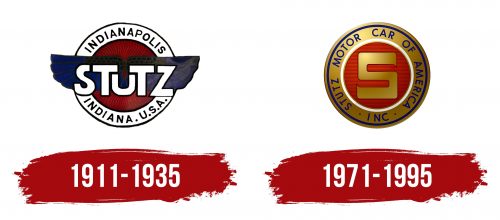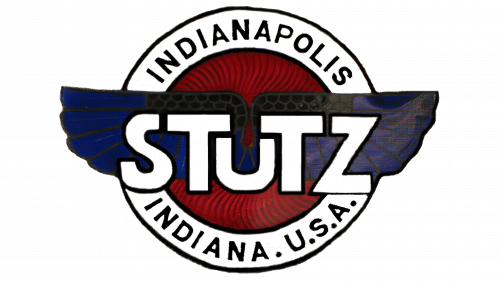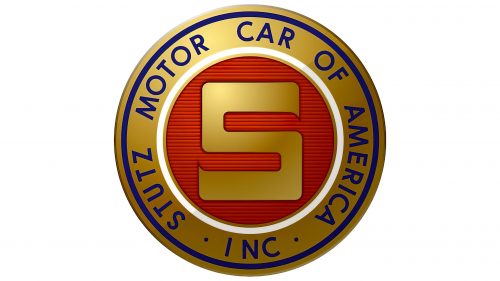The logo of Stutz Motor Company is distinguished by its luxury, though unfortunately, from the past. Its heyday ended in the mid-20th century, and attempts at revival have led nowhere. The refined and elegant emblem remains a vivid reminder of the luxury sports car Bearcat.
Stutz Motor Company: Brand overview
In 1911, Harry C. Stutz, a gifted engineer and businessman, established the Ideal Motor Car Company in Indianapolis, Indiana, marking the beginning of the company’s history. He set out to build a high-performance car that could compete with the top European brands.
He created his first automobile, the Bearcat, in 1911. After only five weeks of construction, this car entered the first Indianapolis 500 event. Even though it was constructed quickly, the car placed eleventh, which was remarkable for a first-time competitor. The company gained acclaim for this achievement and coined the tagline “The Car That Made Good in a Day.”
He started making automobiles under the brand after being motivated by this accomplishment. The business changed its name to Stutz Motor Company in 1912. The Bearcat, a sports automobile that immediately gained popularity among wealthy customers and motorsport fans, was the first model to go into production.
The 1910s were a time of tremendous expansion. The business kept entering races and used them as a stage to highlight the dependability and capability of its vehicles. It expanded its product portfolio by starting to manufacture premium automobiles.
Harry Stutz quit the company and sold his ownership in 1919. Even after its founder left, the company kept growing under new leadership. In the 1920s, the business debuted several avant-garde models, such as the Vertical Eight, which had an eight-cylinder engine with overhead valves.
The company’s prime was in the 1920s, manufacturing some of the most opulent and fastest automobiles. When it was first released in 1927, the Black Hawk broke multiple speed records and came to represent the pinnacle of American car design.
However, the company and many other luxury automobile manufacturers suffered greatly during the Great Depression of the 1930s. The business kept innovating even in the face of financial hardships. It debuted the DV32 in 1931, with a dual overhead camshaft engine that was state-of-the-art for its time.
Regretfully, the financial obstacles proved to be too formidable. Even with its technological advancements, the company’s revenues were dropping. The business stopped operations and built its final automobile in 1935.
With this, the first chapter of the company’s history ended. But people did not forget about the brand. James O’Donnell, a businessman, brought back the brand in 1968 by launching the Blackhawk. Frank Sinatra and Elvis Presley were among the numerous celebrities drawn to this contemporary luxury vehicle based on the Pontiac Grand Prix.
Up until 1995, the resurrected firm produced special automobiles in limited quantities. These contemporary cars maintained the brand’s reputation for exclusivity and luxury even though they differed greatly from the first versions.
The company’s history exemplifies the ups and downs of the American auto industry. The company created a lasting impression on automotive history, rising from an inventive start-up to producing some of the most distinguished cars of their era. This was followed by decades of obscurity and then a resurgence as a manufacturer of exclusive cars.
Meaning and History
What is Stutz Motor Company?
The American luxury car manufacturer was known for creating cars with impressive performance. Harry C. Stutz founded the company in Indianapolis, Indiana, and it became famous for its fast and efficient Bearcat model. The cars, which competed with other luxury brands of the time, were often associated with wealth and status. Throughout its history, the corporation experienced changes in ownership and financial difficulties. Eventually, the company closed its doors, leaving a legacy as an innovative American automaker.
1911 – 1935
The circular emblem of Stutz Motor Company featured a circle that was not at all like a classic roundel because it included a winged element in its structure. The centerpiece was a dark red circle with fine black crosshatches. The hatches were so closely spaced that they resembled a rapidly spinning turbine.
A wide white ring ran along the edge of the logo. This border featured several semicircular inscriptions in a grotesque font – thin, uppercase, and smooth. These inscriptions conveyed the company’s location, indicating its origins and highlighting the brand’s authenticity.
- The upper part contained the single word “Indianapolis.”
- The bottom featured the state and country name – “Indiana. U.S.A.”
This demonstrates that the luxury sports car manufacturer took pride in its origins and sought to honor its birthplace by offering unique sports cars to consumers. This emblem served a strong marketing function, indicating to motorists where they could buy luxury sports cars.
The main focus was on the brand name, which occupied the middle line and was presented not as text but as a full graphic element. The letters were white, outlined in black, effectively standing out against the dark background. The design of this line was characterized by the designers’ effort to maintain symmetry, significantly reducing the size of the “U.” It was centered and appeared as a lowercase glyph surrounded by uppercase letters.
The font was extra bold, geometric, slightly angular, and sans-serif, reflecting the company’s desire to quickly attract clients and intrigue and interest them in their cars. The circle was overlaid with widely spread wings—a symbol of high speed, crucial for sports cars.
1971 – 1995
The emblem of Stutz Motor Company drastically changed its content but retained its shape – it remained the same. It was still a circle but now clearly resembled a heraldic roundel. It featured:
- An accentuated center with a key detail.
- A wide border strip with information.
- A narrow double-ring frame.
Each element had its own significance and distinct design. A red circle entirely occupied the central part, with thin lines horizontally dividing it. Against this background stood a block “S.” It was large and gold, with a gradient and sharp ends, resembling the number 5.
A white ring separated it from the name, behind which was a wide band with circular inscriptions. Dark blue letters on a golden background looked very noble and presentable, emphasizing that this was a brand of luxury sports cars. The border was also blue and gold to show the exclusivity of the sports cars, as these were exclusive vehicles whose revival attempts failed.






